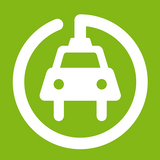DCFC protocol according to EVduty
 In recent weeks, online conversations about public charging spaces have proliferated on social networks. Principles of courtesy are sometimes dictated as regulations and certain charging practices are questioned. Here is the DCFC protocol according to EVduty!
In recent weeks, online conversations about public charging spaces have proliferated on social networks. Principles of courtesy are sometimes dictated as regulations and certain charging practices are questioned. Here is the DCFC protocol according to EVduty!
SPACES RESERVED FOR CHARGING
Parking spaces near charging stations are reserved for CHARGING vehicles. If you are not recharging, park your vehicle in a regular space not dedicated to charging. If you are recharging, move your vehicle to free the charging station once the recharge session is over.
STAYING NEARBY OR NOT
It is NOT mandatory to remain close to your vehicle while charging. However, it is best to monitor the recharge status using your vehicle’s or charging station’s mobile application to intervene in case of a session interruption, or once charging is completed. While charging, take the opportunity of the break time to support the business hosting the charging station.
That being said, some EV drivers who arrive at a busy charging station appreciate having some information to decide whether they wait their turn or go to the next charging station. You can leave a note in the vehicle (visible in the windshield) indicating the approximate end time of your charging session, or a cell number to reach you. It is important to remember that this gesture is by no means mandatory, and that some people prefer not to leave contact information or details on their return time. Furthermore, others are simply unaware of these community expectations. At last, even if the person is nearby or if contact information is available, the EV drivers in the process of charging is under no obligation to yield his/her place before the end of the recharge or to shorten his/her session to accommodate you.
NEVER INTERRUPT THE RECHARGE OF ANOTHER EV DRIVER
NEVER (EVER!) unplug a charging vehicle, regardless of the recharge level reached. Low charging speed (when the 80% level is exceeded, for example) does not justify interrupting another EV driver’s charging session. The fact that the person is not nearby or has not left a note does not justify an interruption of his or her recharge session. The urgency of your charging needs is also not a justification for unplugging another recharging vehicle. Plan your trips, always identify a plan B, avoid rush hours when possible, and if necessary, wait your turn.
FIRST COME
The person whose charging is in progress has priority over vehicles arriving during the session. He or she has the right to finish charging in peace according to the needs he or she has calculated for the rest of his/her trip.
80% OR MORE
Charging speed drops quickly after reaching the 80% level. This is why it is generally “recommended” to stop the recharge session at this level. However, this is NOT an obligation and an EV driver who wants or needs to keep charging beyond 80% has the right to do so, even if there is another vehicle waiting at the charging station. It may be frustrating while waiting your turn to see an EV driver extend his session beyond the 80% level, but it is his/her right.
STORE THE CABLE
After your charging session, always store the cable and place the plug in its protected holster (or make sure it is facing down). This is especially important in winter because a trailing cable is quickly hidden by the snow, and when the snowblower comes… it’s a mess!
ADDITIONAL NOTE FOR MORE EFFICIENT DCFC SESSIONS
Recharge for less time, but more often! Best conditions vary from one vehicle to another, but there is always an optimal combination to help charge at maximum speed. The two main factors are battery temperature and charge level (%). Thus, you can optimize the time and cost of your recharges by observing the charging speed according to different conditions. If there are several DCFCs on your route, two 30-minute stops can give you more kilometres than a single one-hour or more stop. By recharging more often in the best conditions, you will reach your destination faster, recharge for a lower cost and free the charging station more quickly for the next user! If possible, avoid recharging past the 80% level unless it is absolutely necessary to reach the next charging station or your destination.

Leave a comment